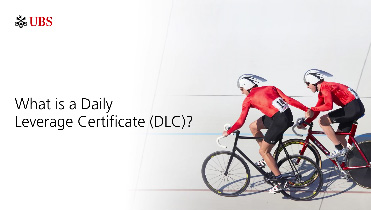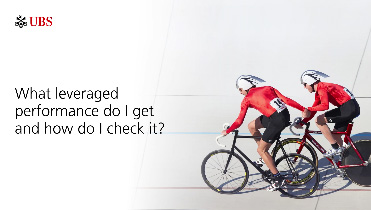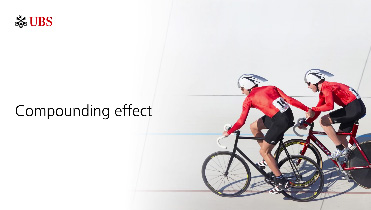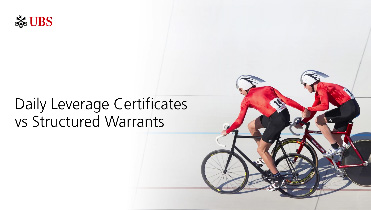Please confirm that you are a resident of Singapore, and that you are not a US Person (as defined under the Regulation S promulgated under the US Securities Act of 1933) and have read, understood and accept the relevant disclaimers and covenants for this website.
Access to these web pages, including posted documents and information, (together, "Materials") is subject to the disclaimers and covenants set out below and published on this website. These materials are distributed, and only intended to be distributed, in Singapore by UBS AG to retails customers who have been assessed to be eligible to purchase or deal in Specified Investment Products (as defined under MAS Notice SFA 04-N12, “Notice on Sale of Investment Products”), accredited investors or institutional investors.. as defined under the Securities and Futures Act ("SFA"). These Materials may be defined as an "advertisement" in the SFA and Financial Advisers Act. This advertisement has not been reviewed by the Monetary Authority of Singapore. These Materials are only directed at and intended for persons in Singapore. The Materials must not be accessed, used, relied or acted upon by persons outside of Singapore.
There may be local laws and regulations which prohibit or limit your rights to access, download, distribute, disseminate, share or otherwise use any or all of the Materials and UBS AG and subsidiaries and affiliates (collectively "UBS Group") accept no liability or responsibility whatsoever for any actions or omissions on your part which may be in breach of any applicable laws, regulations or rules of the jurisdiction or country in which you may be subject to. UBS does not make any representation or warranty (express or implied) in respect of the Materials as to the accuracy, completeness, timeliness or correctness for any particular purpose. UBS Group further disclaims and accepts no liability or responsibility whatsoever for the access, downloading, distribution, dissemination, sharing, reliance or other use of any Materials by or to individuals or entities which provide false information regarding their place of residence or domicile.
These Materials contain information pertaining to daily leverage certificates ("DLC"). Any prices stated in the Materials are for information purposes only and do not represent valuations for individual circumstances or other financial instruments. There is no representation that any transaction can or could have been effected at prices stated in the Materials, and such prices do not necessarily reflect internal books, records or theoretical model-based valuations and may be based on certain assumptions. Different assumptions by UBS or any other source may yield substantially different results.
The Materials are not, and not intended to be, a solicitation, recommendation, advice or an offer to buy or sell any financial instruments or to participate in any particular investment strategy. Nothing in this document constitutes a representation that any information contained in the Materials would be suitable or appropriate to an individual’s circumstances or otherwise constitutes a personal recommendation. Neither UBS Group nor its representatives has any responsibility or authority to provide or have provided investment advice in a fiduciary capacity or otherwise through these Materials. Neither UBS Group nor its representatives is suggesting that any person take a specific course of action or any action at all. By accessing the Materials, you acknowledge and agree with the intended purpose described above and further disclaims any expectation or belief that the information constitutes investment advice to you or otherwise purports to meet your investment objectives. Prior to making any investment or financial decisions, please take steps to understand the risk and return of the investment and seek individualized advice from your own personal financial, legal, tax and other professional advisors who would be familiar with the particular facts and circumstances of your investment objectives.
The End User shall not, in whatever form, reproduce, distribute, retransmit or disseminate all or any part of the Market Data without SGX’s prior written consent. Unless otherwise agreed, such End User shall enter into a separate agreement with SGX for redistribution.
Please read the disclaimer and the specific Singapore product disclaimer before proceeding
This privacy disclaimer is issued by UBS Securities Hong Kong Limited (“UBS”, “We”).
In the context of UBS’ DLC Newsletter, we collect and process your personal information (email address) (“Personal Data”). We collect and process your Personal Data for the purposes of engaging in prospecting, business development and/or protecting and enhancing UBS’ brand and to manage your subscription to UBS’ DLC Newsletter (the "Purpose").
Your Personal Data may be shared with and processed by UBS Group companies, third parties or service providers globally to carry out the Purposes. If Personal Data is transferred abroad, it may no longer be protected by your local laws and may fall under foreign regulations that allow the Personal Data to be passed to relevant local authorities or other third parties.
We will retain your Personal Data for as long as necessary to fulfil the Purpose.
For more information about how UBS processes your data including how we protect your data, your rights in respect of your data and contact details of the Group Data Protection Officer, please refer to our Privacy Notice here.
If you do not wish to subscribe to UBS’ DLC Newsletter or if you have any questions about the processing of your Personal Data, please contact us at ol-sg-dlc@ubs.com.
By choosing to sign-up for the UBS’ DLC Newsletter, you confirm you are resident in Singapore and consent to the processing of your Personal Data as outline above.
Type the code shown below:






 Compounding GAIN
Compounding GAIN
